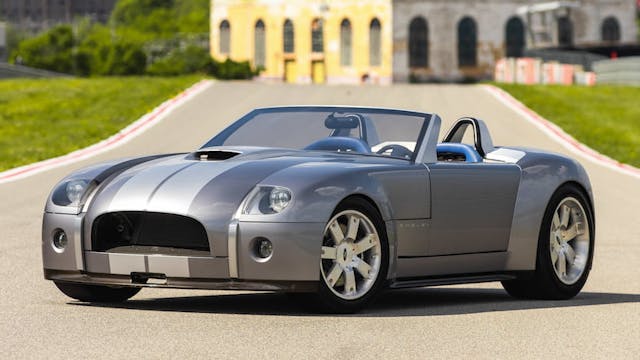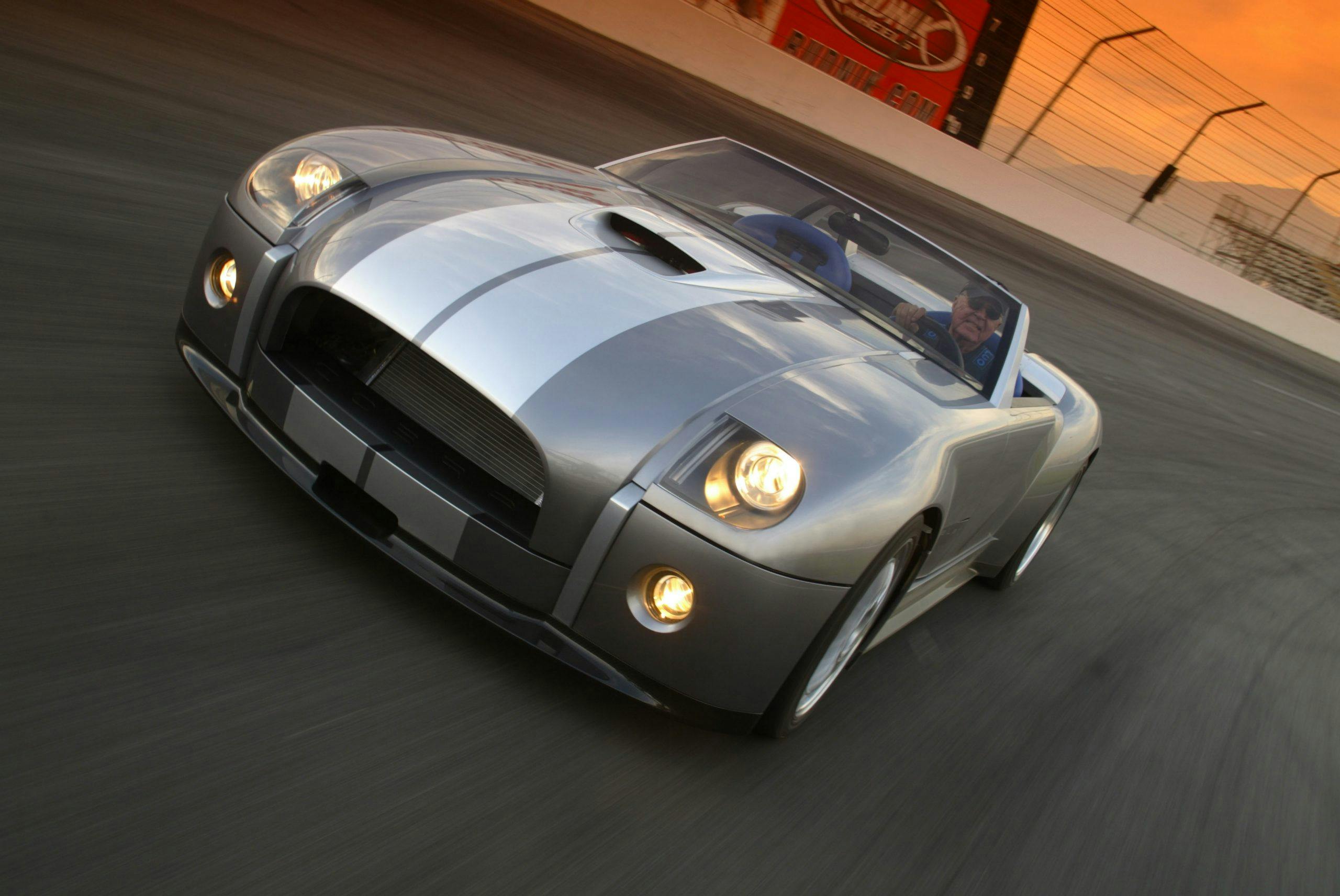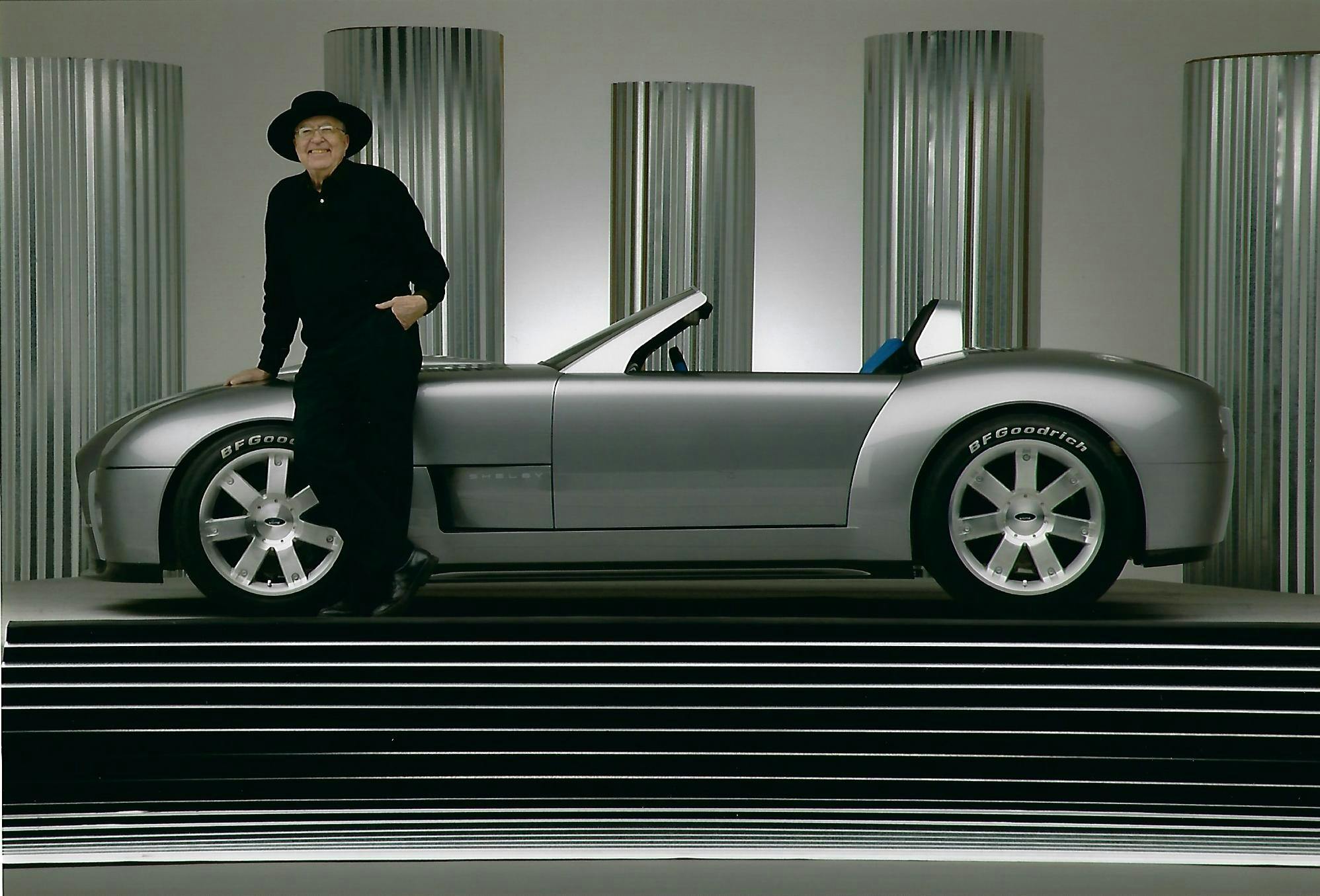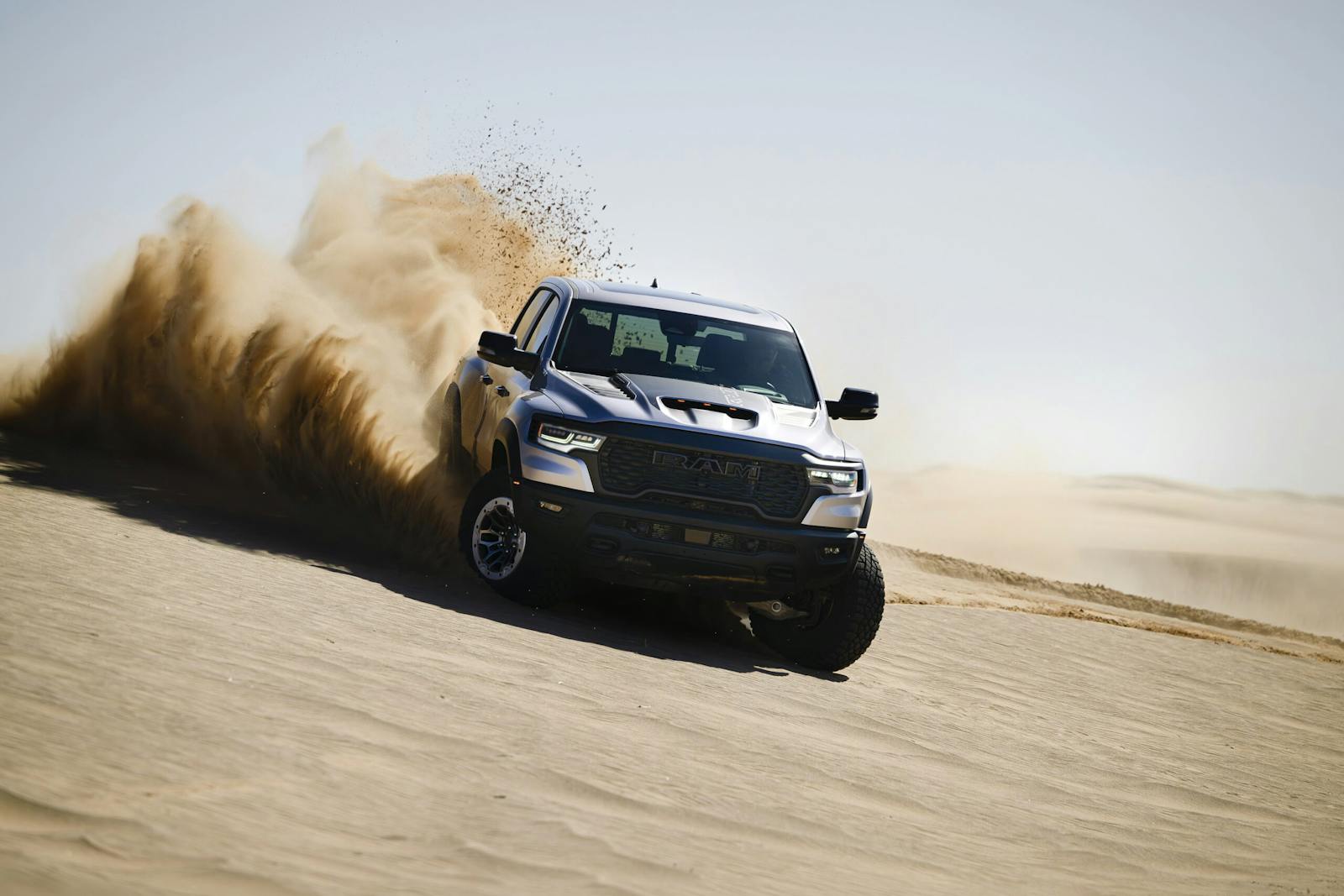Ford’s V-10 Shelby Cobra concept is heading to auction in Monterey
Come August, Monterey, California, is usually ground zero for European automotive royalty. This year, a very special dream car will be vying for the spotlight during Car Week 2021—one bristling with Detroit muscle. Mecum announced it will host the auction of the one-off V-10 Shelby Cobra concept that Ford unveiled in 2004. The show-car roadster debuted at the 2004 North American International Auto Show in Detroit, and Carroll Shelby played a role in its development. Shelby even drove the car on track and gave rides to some lucky journalists.
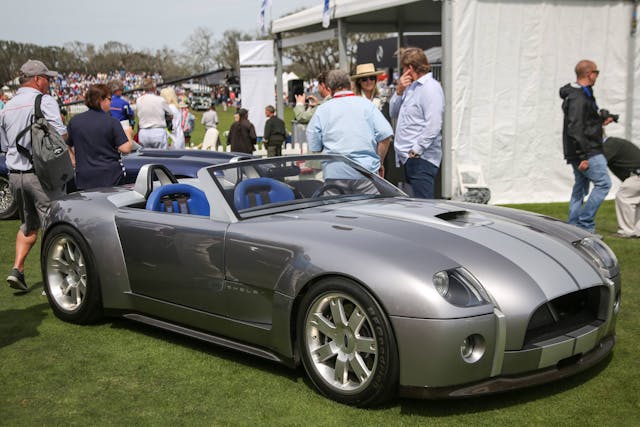
Ford had planned to build the Cobra as a follow-up to the 2005–06 GT, aiming to poach Corvette and Viper buyers rather than supercar folk. While the GT used a supercharged, tall-deck 5.4-liter V-8, the Cobra relied on a short-deck V-10 based on 4.6-liter architecture. The Viper, interestingly enough, was envisioned as a hardcore successor to the original Shelby Cobra and used a V-10 before Ram adopted an iron-block V-10 with similar displacement. In Ford’s case, the truck V-10 came first and never got the four-valve heads that the Cobra concept’s 6.4-liter powerhouse did. The 605-horsepower dry-sump engine is linked to a Ricardo transaxle that’s mounted in the rear. The packaging helped the Cobra’s weight balance while keeping plenty of foot room as there’s no need for a huge transmission tunnel.
Like the GT supercar, this visionary Cobra made extensive use of aluminum extrusions to keep the chassis lightweight and rigid. The construction is clearly visible when the forward-tilting hood is lifted. Speaking of that hood, it, like the rest of the body, is made from fiberglass and carbon fiber over a foam core.

Due in part to the economy’s downward turn in 2007, Ford pulled the plug on Cobra production. Just four of these all-aluminum DOHC V-10s were built. One was used in the 427 concept from the previous year, one was used in the GR-1 concept—a modern take on the Shelby Daytona Coupe—and one was tested in a Mustang.
Chris Theodore, Ford’s Vice President of Product Development at the time, was responsible for getting the concept built and was also responsible for making it roadworthy once again. Theodore bought the car in 2017 when Ford auctioned it off to raise money to restore the Fair Lane mansion where Clara and Henry Ford lived. As it was a concept and never meant for use on public roads, Ford decided to sell the car as more of a sculpture than a car. To that end, they mangled the transmission output shaft and welding the drive shaft’s splines inside the torque tube, then buttoned it up by bolting on the inspection cover and grinding the heads off the bolts. That was merely a mild stumbling block for Theodore, who enlisted Technosports in Livonia, Michigan, to return the concept to its former glory and running form. Technosports originally built the chassis, and the firm helped Theodore have the car ready for Amelia Island in 2018, where the car was a big hit. We spoke with Theodore about the car, so if you’d like to see more, we suggest you visit that article here. When we spoke to him in 2018, Theodore had plans to put some track miles on the car, but it appears that the racing slicks included in the action are from its original show days. Road tires are also included in the auction.
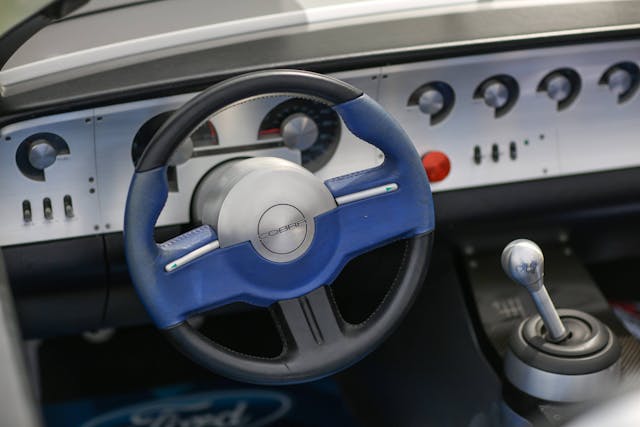
Mecum doesn’t have a presale estimate on the car’s value, but it is a very rare piece of Ford history with connections to the legendary Carroll Shelby, which means bidding could get exciting. Perhaps even more enticing, the car is now titled and licensed for road use. Yee-haw.
